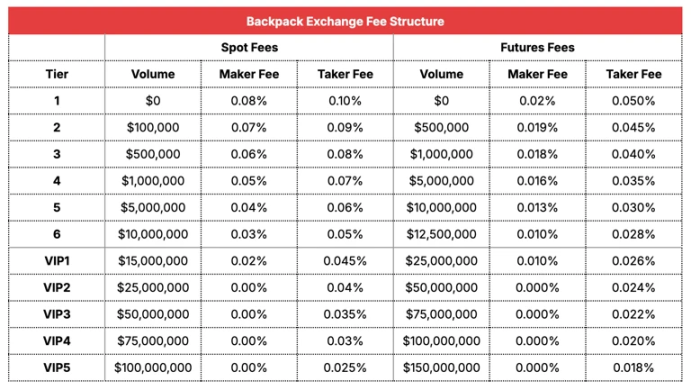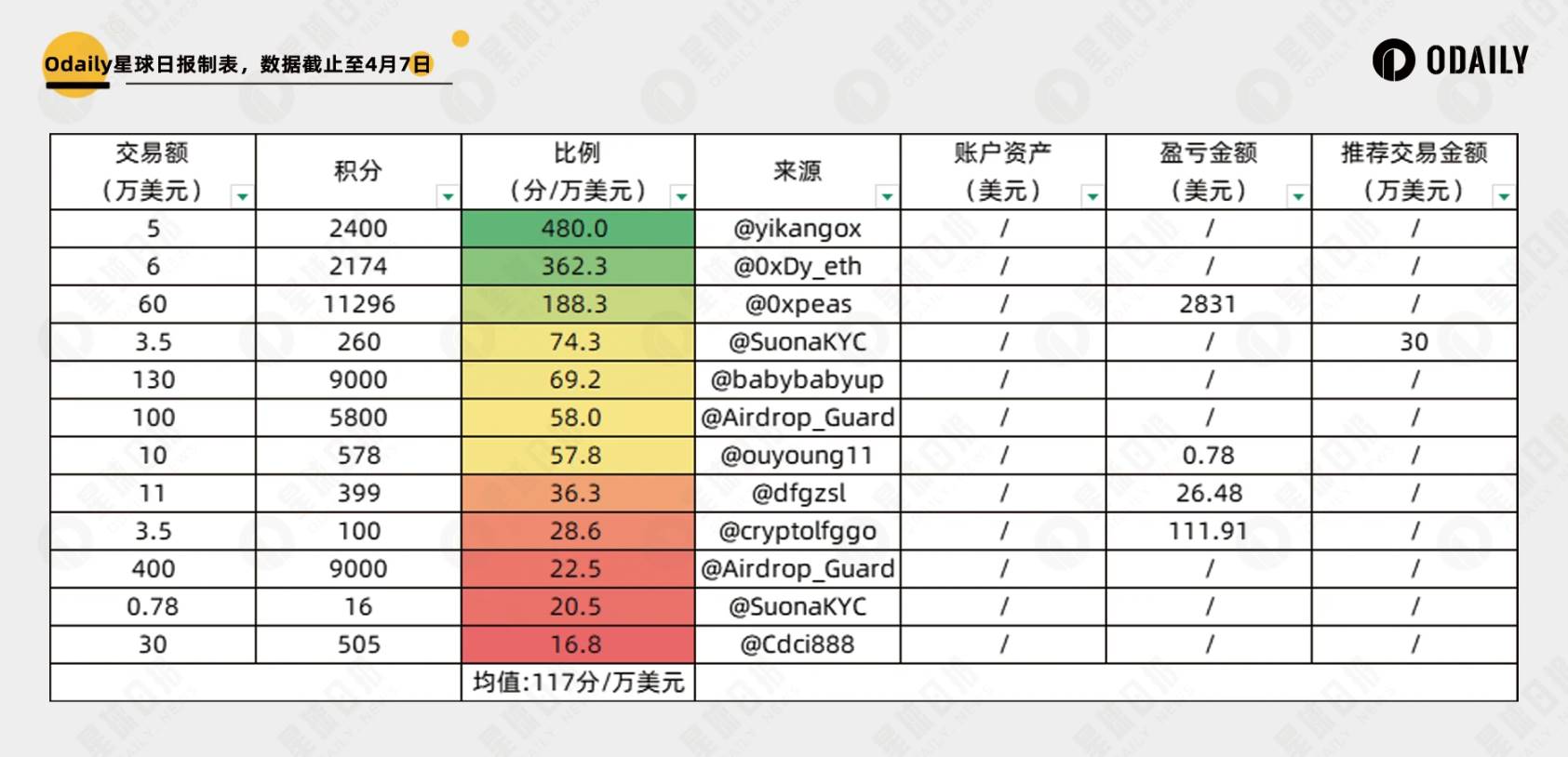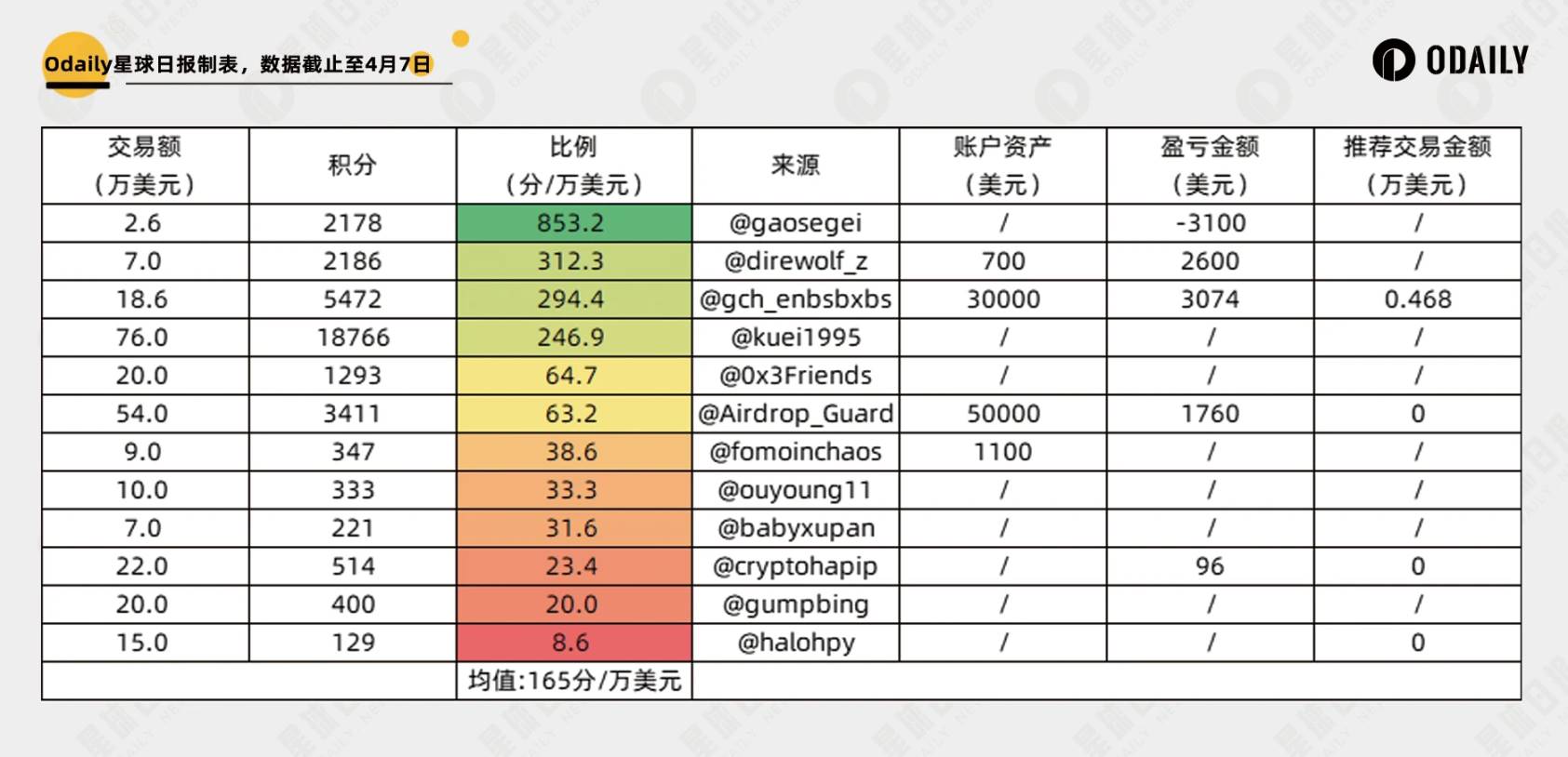Beyond the trading volume, the ratio of "profit and loss amount / trading volume" is highly positively correlated with the efficiency of point acquisition.
Written by: Nan Zhi (@Assassin_Malvo)
On March 21, the on-chain exchange Backpack Exchange announced the launch of its first season of the points program, which will last for 10 weeks and is currently in its third week, with plans to introduce more seasons afterward. Backpack stated that it will distribute points to users weekly based on their activity across all products on the exchange, and the points criteria will be continuously updated and intentionally kept undisclosed, aiming to reward users who contribute to Backpack's development.
Backpack did not explicitly state the connection between the points program and future tokens. This article will review and calculate the points situation based on the assumption that there is a direct correlation between points and token airdrops.
Backpack Background
In September 2022, Coral, the development company behind Backpack, announced the completion of a $20 million financing round, led by FTX Ventures and Jump Crypto, with participation from Multicoin Capital, Anagram, K5 Global, and other strategic investors. According to information from The Wall Street Journal, Backpack Exchange was co-founded by former FTX General Counsel Can Sun and former Alameda Research software developer Armani Ferrante.
In April 2023, Backpack launched the first xNFT series Mad Lads in the Solana ecosystem. This NFT project gained immense popularity, with its trading volume once ranking first across the entire network, even surpassing the blue-chip NFT project BAYC in the Ethereum ecosystem.
In October 2023, Backpack announced the launch of a "regulated" exchange, Backpack Exchange, and obtained a VASP license issued by the Dubai Virtual Assets Regulatory Authority.
In April 2025, Backpack announced the formal completion of its acquisition of FTX EU. From this day forward, Backpack EU has officially initiated asset recovery procedures and fund distribution processes, providing clear and convenient fund return services for former FTX EU users, helping them recover previously frozen fiat assets. After the completion of this acquisition, Backpack will reactivate the licenses held by FTX EU and will provide comprehensive cryptocurrency derivatives trading services across the European Union in the future.
Points Basic Rules
The first season of the points program distributes 10 million points weekly for 10 weeks, meaning a total of 100 million points for the first season.

Backpack stated that all activities, including spot trading, contracts, lending, deposits, and invitations, can earn points, which are distributed every Friday at 10:00 (UTC+8). The official trading fee schedule is as follows:

Points Distribution Review
The points distribution for the first week is as follows:

The points distribution for the second week is as follows:

What are the Key Factors?
Here, we will divide the points by the trading volume to obtain the efficiency of point acquisition, which indicates how many points can be earned for every ten thousand in trading volume, listed in the third column of the table (referred to as "ratio").
Based on the above two tables, it can be seen that points are positively correlated with trading volume, but trading volume is not the decisive factor for point efficiency, at least not the only decisive factor. Two accounts with similar trading volumes may have significantly different amounts of points distributed.
The factors causing this difference may be the degree of similarity between the account and "real users." For "pure volume-filling" accounts, their trading volume is achieved through multiple quick in-and-out transactions, characterized by low "profit and loss amount" and short "holding time."
In the first week's community feedback collection, we saw several community members point out that "holding time" is a key factor. In the second week, more people believed that the "profit and loss amount" was modified by the officials to become a more critical factor, as both large profits and large losses could effectively enhance the point distribution ratio, especially for the top performer in the second week, whose airdrop ratio was far higher than others.
Additionally, the author believes that "profit and loss amount / trading volume" is a highly positively correlated factor. By organizing the known data into the table below, we can clearly see that the higher the profit and loss amount / trading volume, the higher the point acquisition efficiency (ratio). Therefore, for non-volume-filling users, how to improve the profit and loss ratio is a key factor.

Points Value Estimation
Assuming that in the final airdrop, points are exchanged for tokens at a 1:1 ratio, and the initial circulating market value of the tokens is assumed to be $50 million, with a total of 100 million points, the value of each point would be $0.5.
At the same time, we assume that the overall point efficiency (ratio) is 100 points / $10,000, meaning that to earn 1 point, a trading volume of $100 must be achieved. The highest spot taker in the lowest tier would incur a fee of $0.1, while the lowest contract maker in the lowest tier would incur a fee of $0.02.
In this case, volume-filling trading is actually profitable, and the user who ranked first in the second week earned 2,178 points worth $1,089, which cannot compensate for the loss of $3,100. For users imitating real users in trading, they should cautiously control their loss amounts and may even consider hedging trades with dual accounts.
免责声明:本文章仅代表作者个人观点,不代表本平台的立场和观点。本文章仅供信息分享,不构成对任何人的任何投资建议。用户与作者之间的任何争议,与本平台无关。如网页中刊载的文章或图片涉及侵权,请提供相关的权利证明和身份证明发送邮件到support@aicoin.com,本平台相关工作人员将会进行核查。




